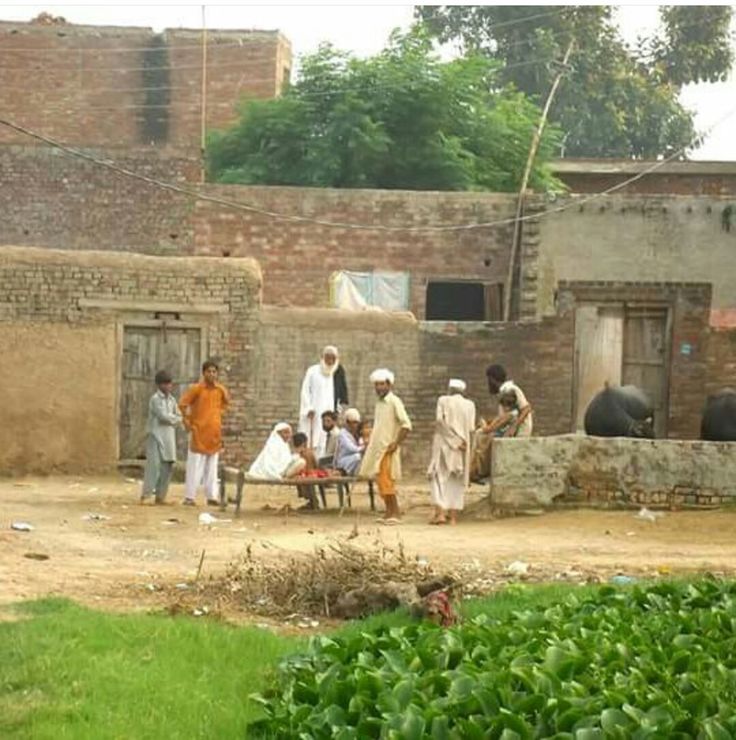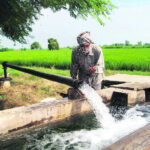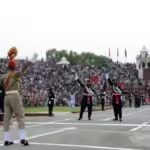Nineteenth-century emperor Maharaja Ranjit Singh built a bridge over a canal that connected Amritsar with Lahore after his favorite dancer Moran lost his silver sandals while crossing a flooded waterway. The emperor’s prompt response to the dancer’s order gave the bridge its name – Pul Kanjari – a derogatory reference to the Moran section, Kanjar.
The bridge is said to have sprung up from the bridge over the bridge into the thriving commercial city, facilitating trade between the two sides of the Ravi River.
In 1947, the division of India ended trade between the two sides, the most significant of which was Pul Kanjari. As the future looked like, the village became the last resort on the Punjab side of the border, landing in a safer area with fewer people on the border.
Today, Border Security Force (BSF) officials welcome you to the village with suspicious eyes. Despite the well-preserved 19th-century Hamam and the newly erected monument commemorating the village’s glorious past, visitors are less likely to visit the village.
Part of a village called Khurd Kalan, Pul Kanjari is lost in its memories. The neglect and neglect of nearly a thousand families in the last 70 years is a sign of the neglect of the institution in the hundreds of villages along the Punjab border – a distance of 553 kilometers marked with stones, canals, and bars, across the Ravi and Sutlej rivers.
Known as the Radcliffe Line, the border crosses the districts of Gurdaspur, Pathankot, Amritsar, Tarn Taran, Ferozepur, Fazilka Punjab, and the villages about three miles [5 km] around the border tell the story of a slow descent and unstable. sadness.
For Khurd Kalan resident Gurjinder Singh, farming his farm has been a nightmare for many years. “At 8:30 am each morning, I, along with many other villagers, line up with a bag full of IDs and permits to enter my farm. After a thorough examination, BSF officials escort us and our accomplices to our land, “he said.
Most of Singh’s farms are outside the barbed-wire fences set up by the BSF in the late 1980s to deal with terrorist attacks and arms smuggling. The distance from the border to the fence is between half a kilometer to three. Since the central area is controlled by the BSF, it has adversely affected the lives of many of the residents of these border areas located on private land.
Citizens are barred from entering the country beyond the ropes. Only those who own land on the other side are allowed, but only with permission. All the land was held by several farmers on the other side of the fence.
Citizens often have to go through a legal troubleshoot website to obtain the necessary access. Without having the necessary permissions, most of their access to the fenced-in area depends on the BSF’s daily security tests.
“Because of the phone call, it has been a daily struggle for us. Everything we carry – from lunch boxes, and seed bags to farm items – is checked. Since we can freely enter our world, we cannot take care of our crops during fog, rain, or storm. We must work in partnership with BSF officials, “said Singh.
“Our entry and exit problems have been the same for the past 20 years. However, governments have not made regular arrangements for us, “he said.
Khurd Kalan paints a bleak picture of progress in all aspects. Poor health care and primary schools, inadequate infrastructure, and the occasional supply of electricity are some of the things citizens have learned to live with. Most residents never went to school or left early.
Most of the landowners across the fence are small or medium-sized farmers who do not have heavy equipment such as tractors or threshing. Therefore, these farmers often rely on renting their heavy equipment – a common practice throughout Punjab. But in this border region, each of these machines needs to be registered for temporary use, which is another long-running bureaucratic struggle every agricultural season.
Such problems often delay the cycle of their crops, and the difficulties they have to face during marketing.
The advent of farm equipment has forced these farmers to continue farming practices. In a situation like this, they too have been forced to rely on workers who are hard to find in this small, overcrowded city.
Their plight is getting worse as the BSF sets a time for these citizens to farm. “We can enter our farm from 9 a.m. to 4 p.m. This reduces our productivity. For years we wanted to be allowed to stay on our farms at least until 6 pm. No one understands that we are fighting for survival, “said Singh as he blamed the successive government in Punjab for ignoring their plight.
Outbursts of exit
The daily struggle of border dwellers is further fueled by hostile national politics. Intense relations with Pakistan have made the situation in these areas very tense. Residents of Khurd Kalana complain of constant fluctuations.
“The biggest insecurity for us is the permanent lack. Whenever relations between India and Pakistan become strained, we are asked to step out. In the last four years, we have left our village at least 15 times, the last of which was after the attack on Pathankot airport, “said Manjeet Brar of Naushera Dhalla, another border town, in the Tarn Taran region.








